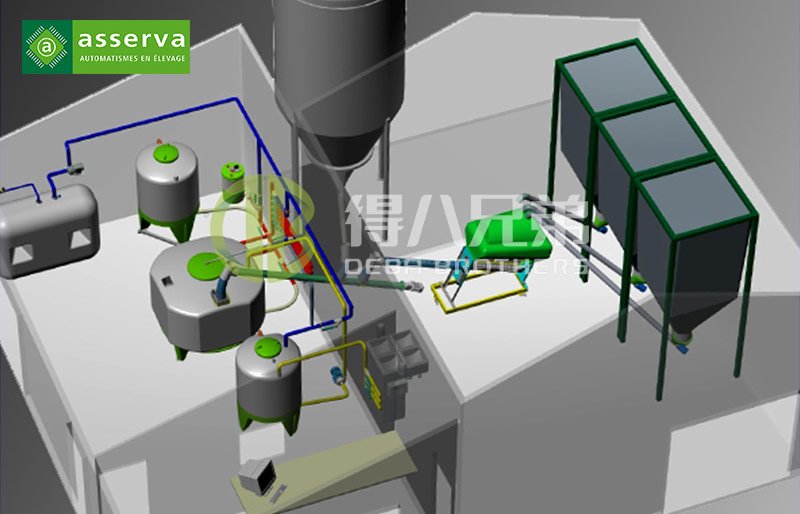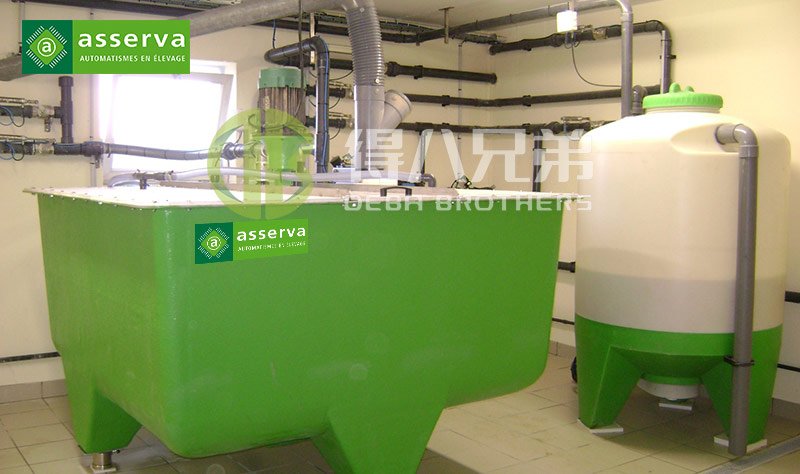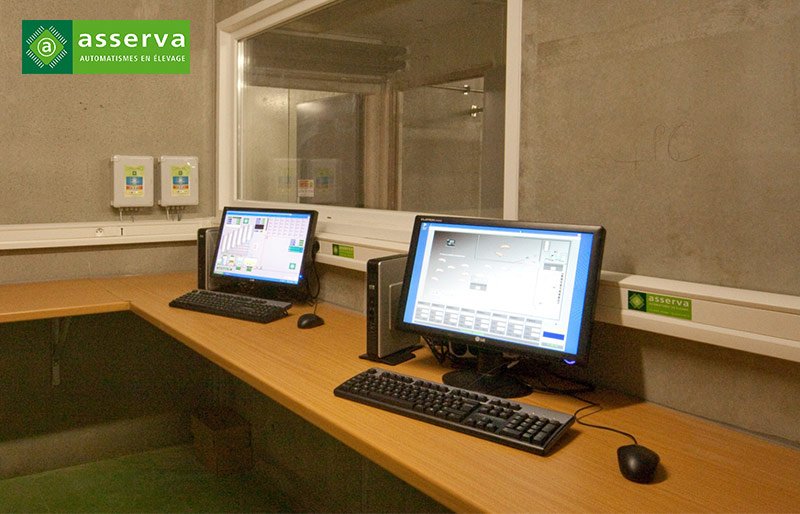28
Aug
Liquid Feeding in Pig Farming: Concepts, Applications, and Prospects
In pursuit of reducing feeding costs and utilizing food and grain by-products efficiently, some of Europe's
well-developed pig farming nations have circled back to liquid feeding since the 1980s. According to
statistics, liquid feeding has gained popularity in scale-intensive pig farms in Europe and America,
accounting for 30% to 50% of operations. Feed companies, liquid equipment manufacturers,
and pig farming enterprises have ventured into promoting and implementing this method. However,
a clear understanding of concepts, applications, current development status, advantages,
and challenges of liquid feeding remains somewhat unclear. In this article, we provide a concise overview
of the concept of liquid feeding, its research and application status, and its future trends, hoping to inspire
and assist pig farming enterprises.

I. Liquid Feeding and Liquid Feed
Liquid feeding generally refers to mixing various raw materials (energy, protein, minerals, additives, etc.)
with water in specific proportions before feeding pigs. This method is an alternative to dry feeding.
The water proportion usually needs to be above 2.5:1. Currently, popular creep feeding for piglets can
be considered a form of liquid feeding, but excluding the semi-wet feeding of lactating sows. Liquid feed,
on the other hand, is an industrial form of feed that includes liquid complete feed, liquid feed ingredients,
liquid feed additives, and more. It can serve as a component in liquid feeding. Due to transportation and
storage reasons, commonly seen are liquid ingredients and liquid feed additives such as molasses,
liquid acids, liquid anti-fog agents, liquid lactobacilli, etc.
II. Current Applications of Liquid Feeding
The article explores the applications and research status separately for piglets during the nursery phase and
pigs during the growing-fattening phase.
Nursery Phase: Transitioning piglets from liquid milk to solid feed after weaning can be stressful, affecting
their growth. Liquid feeding helps in this transition by providing a smoother change, thus alleviating weaning
stress. Studies indicate that liquid feeding significantly improves intestinal structures, absorption areas,
and growth performance in piglets compared to dry feed. The introduction of liquid feed at 14-24 days of
age results in a 63% increase in feed intake, 4% increase in weaning weight, 18% increase in feed intake
three days post-weaning, and a 16.5% boost in daily weight gain. These findings demonstrate the potential
of liquid feeding to enhance pre-weaning supplementation.
Growing-Fattening Phase: Liquid feeding in this phase makes use of unconventional ingredients like liquid
amino acids, enzymes, and various agricultural by-products, substantially reducing feeding costs.
Research indicates that liquid feeding increases feed intake, daily weight gain, feed efficiency,
and overall pig health. This method has been particularly successful in improving meat quality,
increasing growth rates, and maintaining body condition.
III. Liquid Feeding in Sow Production
High-producing lactating sows often experience reduced feed intake during hot weather, which can negatively
impact milk production and sow health. Liquid feeding can address this issue by increasing dry matter intake in
sows and improving production performance. Moreover, liquid feeding can help pregnant sows maintain
stomach volume, aiding post-partum feed intake and reducing constipation.

IV. Considerations and Key Points for Liquid Feeding
Hygiene is crucial for successful liquid feeding. Uneaten liquid feed can deteriorate and pose health risks.
Proper feeding intervals and hygiene practices are essential.
Variability in ingredients demands ingredient analysis for stable feed quality.
Initial investment for liquid feeding equipment can be high, but collaborative efforts and innovations are driving down costs.
Adjustments in particle size, water-to-feed ratio, barn design, and feeding frequency might be needed for
optimal results.
V. Future Prospects of Liquid Feeding
Ongoing research continues to explore the benefits and drawbacks of liquid feeding, ranging from production
performance to meat quality. Liquid feeding holds the potential to become a significant aspect of pig farming
by enhancing growth, health, and meat quality while reducing environmental impact. As the understanding and
acceptance of this method grow, the future of pig farming looks promising with liquid feeding at its forefront.

liquid feeding presents a promising avenue for optimizing pig farming practices. Its advantages in growth,
health, and meat quality are being recognized, positioning it as a valuable tool for the future of pig production.


